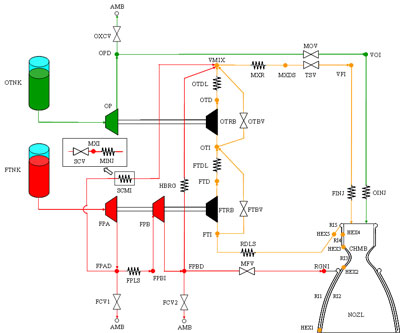

 |
Typical transient analyses estimate overall engine response over mission environments and provide preliminary valve sequencing for engine startup and shutdown. These predictions benefit rocket engine and high-energy laser programs by:
|
| Sierra utilizes the ROCket Engine Transient
Simulation (ROCETS) program to perform system simulations.
This program is suppied and maintained by
NASA MSFC. Sierra Engineering has performed analysis on a multitude of rocket engines configurations:
|
 |
ROCETS has been used effectively to simulate all types of non-Rocket fluid systems as well. For example, ROCETS was used to simulate an NH3 and Ethylene Glycol cooling system along with developing the proportional, derivative, and integral gains for the control valves.
ROCETS is effectively used as the "heart" of all our system optimizations. The program is able to generate steady-state solutions typically within one or two seconds. Transient runs depend on the configuration, valve timing, and mission time, but typically require between several minutes to several hours of CPU time.
A few of the latest changes to ROCETS include improved saturation property lookup tables, the ability to simulate fully lit, partially lit, and unlit mixed combustion propellants, and inerts mixed with propellants.